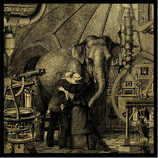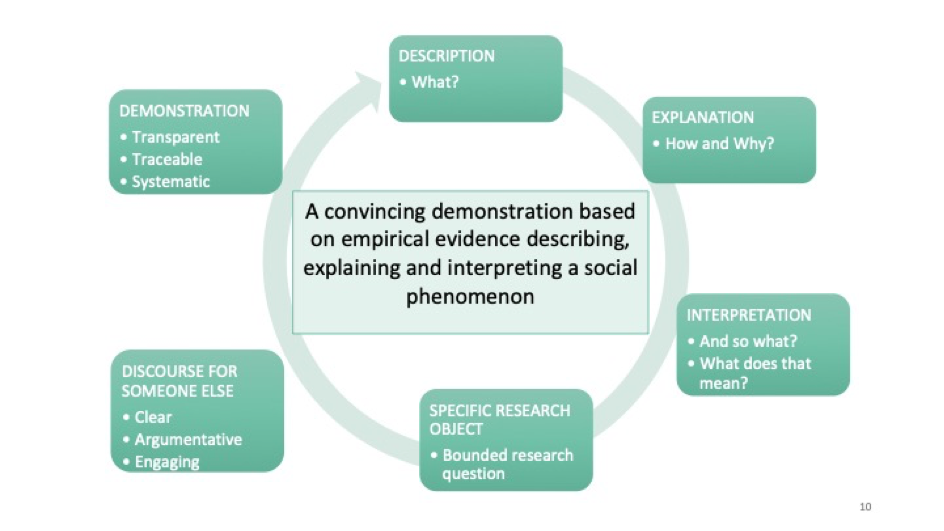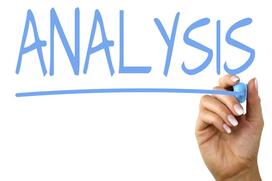|
As a student, have you ever been told that your work was “too descriptive” or that you needed to be “more analytical”?
So what is analysis and what does it take to produce good analytical work? What is analysis?Analysis is a process of transformation. Raw data and information do not have meaning per se. It is you, as researcher, who make meaning out of it, via the process of analysis. Analysis is a creative process. What you create through analysis is a new discourse about the world, which helps people perceive the world in a different way, understand things that they did not know or did not understand before reading your research. But how does it work? How does analysis make sense of the world, then? To summarise: by bringing focus, synthesising, naming, establishing patterns and relationships that will help other people in perceiving these patterns and relationships and thus understand the world differently. A good metaphor for analysis is the work of astronomers and other stargazing lovers who identified constellations. The sky is full of stars. And some people drew patterns in the sky, named these patterns and even created stories about the shapes thus formed. This way of perceiving the sky is passed down from generations to generations, taught and written in books. And people who learned them can’t help but seeing these patterns when they look at the stars. Here are two definitions of analysis taken from methodology handbooks: “Taken literally, ‘breaking up’ something complex into smaller parts and explaining the whole in terms of the properties of, and relations between, these parts” (Robson 2011: 412) “The process of bringing order to the data, organizing what is there into patterns, categories and descriptive units, and looking for relationships between them; ‘interpretation’ involves attaching meaning and significance to the analysis, explaining the patterns, categories and relationships…” (Brewer 2000: 105) These definitions highlight the double process involved in analytical work: - on the one hand, the breaking down and simplification of the inherently messy social world; - on the other hand, the building up of patterns between selected elements to produce a new (and synthetic) way of interpreting the world. In practical terms, the transcription of one hour of interview can take up to 40 pages. Thus, the transcription of 10 interviews amounts to 400 pages. You need to break down your material into manageable segments, and focus on certain elements and sacrifice others, in order to find out what is the most interesting knowledge you can produce out of this data. Does that mean that everything goes?Listing explicit criteria about what we need to do to produce a good analysis can help us ensure we are on tracks regarding our analytical goals. To sum it up: the objective of analysis is to produce a convincing demonstration based on empirical evidence describing, explaining and interpreting a social phenomenon. Criteria of analysis 101: The ‘wheel of analysis’In the schematic ‘wheel’ below, I unpack the definition above to make explicit a series of criteria to help you produce a good analysis: Let’s unpack further these criteria:
Each of us has natural strengths and weaknesses. For example, some of us will have no problem in expressing their argument with clarity but will struggle to establish clear boundaries to their research topic. Others will provide a rich interpretation but without demonstrating how they reached these conclusions. It is important to identify which dimensions of analysis are your weaknesses or which ones you usually tend to neglect, and work on them as a priority.
5 Comments
Anon
8/9/2020 11:17:58 pm
I’m working on my master’s thesis, and I found this super helpful in breaking down the steps my writing should be following— thank you!
Reply
9/7/2020 10:07:50 am
This article has been a very important read for me. The content has helped me develop a structure with which I intend to approach a set of interviews I had taken at college. Thank you Dr. Alejandro.
Reply
PJ
8/9/2021 08:56:24 pm
This was super helpful. I am going to apply this method from now.
Reply
SS
6/22/2023 10:04:47 am
This is really easy to understand the important points! A lot of great metaphors. Thank you very much!
Reply
Your comment will be posted after it is approved.
Leave a Reply. |
AuthorAudrey Alejandro Archives
March 2023
Categories
All
|





 RSS Feed
RSS Feed